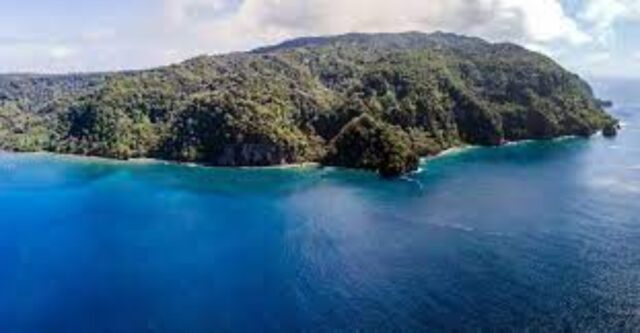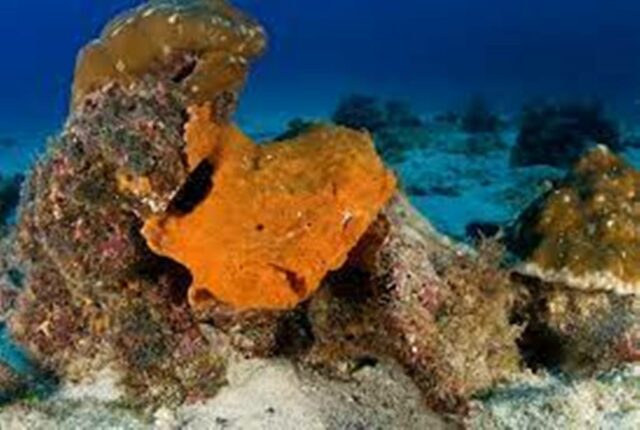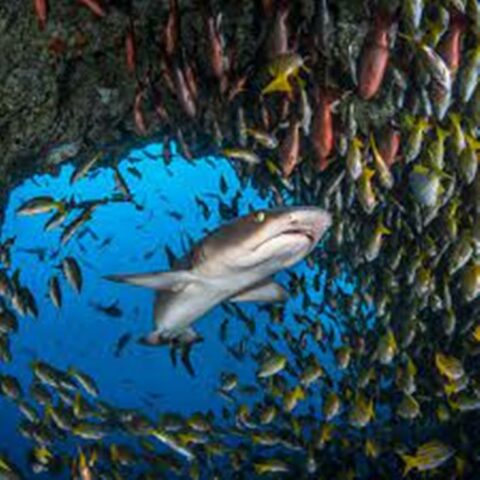A whitetip reef shark swims inside a cave off the coast of Cocos Island. The recently announced legal protection will expand the fishing ban around the island and create a safer habitat for vulnerable shark species like these.
The first time he immersed himself in the waters surrounding Cocos Island, Enric Sala felt as if he were in an “underwater Jurassic Park“.”I vividly remember diving under a school of 200 hammerhead sharks, inside a school of thousands of bigeye trevally and [being] surrounded by 20 mating green turtles,” the explorer recounted.

The crystal clear waters that are home to that vibrant life, reminiscent of prehistoric times, are now receiving more protection to keep them pristine. Costa Rica’s Isla del Coco National Park, a protected marine reserve since 1982, will grow 27 times in size. It will be contained within a new sustainably managed marine reserve called the Bicentennial Managed Marine Area, enacted by the President of Costa Rica, Carlos Alvarado Quesada.In total, the declarations will protect 61,502 square miles of ocean (159,290 square kilometers). That’s three times the size of the mainland of Costa Rica.
The announcement means that the country, famous for its ambitious environmental goals, is now protecting 30 percent of its oceans, compared to just 3 percent before the announcement.
Earlier this year, 50 countries said they would protect 30 percent of their land and 30 percent of their oceans by 2030. Moreover, the administration of Joe Biden, President of the United States, has pledged to work towards a similar goal. This “30 by 30 target” is one that scientists have said is necessary to mitigate climate change and prevent rapid loss of biodiversity.
Currently, less than 8 percent of the world’s oceans are under some form of legal protection, and Sala says more is needed “if we want to prevent an extinction crisis and the collapse of our life support system.”

Treasure Island
At the heart of Costa Rica’s newly expanded reserve is “Isla del Coco,” also known as Treasure Island (Isla del Teroso, and is believed to have inspired the 1883 book of the same name). It is a remote island, more than 560 kilometers from the coast and uninhabited, although in the seventeenth century it was visited by pirates who allegedly hid an infamously looted loot known as the “Treasure of Lima” that today could be worth a billion dollars. It has never been found.
As the southernmost extension of North America, the island sits in the hollow of a current called the North Equatorial Countercurrent, which sits at an oceanic confluence of mating, migration, and feeding. The twenty-three square kilometer island is just the visible tip of a line of submerged volcanoes that rise above the ocean floor and are home to an explosion of marine life. At least three species of birds, two fish, and two reptiles cannot be found anywhere else on Earth.It also contains more than 200 different plants and fish, 400 insects, 100 birds and whales, dolphins and sea lions that find refuge in the park.
It is especially rich in sharks, home to 14 different species, three of which are in danger of extinction.“It is known as the island of sharks,” says Carlos Manuel Uribe, president of Friends of Cocos Island, an environmental group started by former Costa Rican president Rodrigo Carazo Odio in 1994. “The first time I jumped into the water, I was surrounded by sharks. There is so much biodiversity around you.”Animals and plants of all sizes are hidden within its coral reefs and caves. Cocos Island has some of the densest biomass, a scientific term for living organisms.
While the region has been legally protected by Costa Rica for 39 years and has been a UNESCO world heritage site since 1997, a study conducted in 2009 by the National Geographic environmental advocacy group Pristine Seas, led by Sala, discovered that the species that populate the area were being threatened by nearby fishing boats.
Biodiversity and fishing threats
Subsequently, a National Geographic documentary was produced on the region’s biodiversity and fishing threats, dubbed the Cocos Island Sharks.The team found that the unprotected seamounts surrounding the island were littered with fishing lines. The region’s waters are teeming with tuna to be turned into fish, its sharks are targeted by poachers, and a 2018 report by a local environmental group found that illegal fishing was a major and growing threat.

The new protections will send a message that Costa Rica is serious about protecting its biological assets, says Andrea Meza, Costa Rica’s Minister of the Environment.”It is very important to give clear signals to illegal fishermen that there will be more control and monitoring of the ocean,” he says. “For this reason, the expansion was very important because we can increase control and supervision.”
While the larger Bicentennial Managed Area will have fisheries, details of which are a work in progress, fishing in the smaller park on Cocos Island will be prohibited. Globally, just under 3 percent of the oceans are strictly protected by a ban on fishing or other “extractive” industries such as mining.
Good for the environment, good for people
At the UN climate conference held in November in Glasgow (COP26), where world leaders met to negotiate policies to curb climate change, Costa Rica, Panama, Colombia and Ecuador agreed to protect 193,000 square miles (500,000 square kilometers) of the Eastern Tropical Pacific, the corner of the Pacific Ocean between North America and South America.
In addition to conserving habitats in local waters, the agreement aims to protect the migratory routes followed by sharks, whales, rays and turtles. Colombia has already announced that it will expand its marine reserves, as has Ecuador, home to the famous Galapagos Islands.
While the announcements have been ambitious, Meza says more work will be needed to ensure that these marine reserves are more than just “paper-parks” – parks where protections are not actually enforced.
“We have to be aware that what we are doing,” says Uribe. “Our next goal is to move from an “on-paper-only” park to a well-controlled and protected area. For that we need funding and use up-to-date satellite surveillance to intercept illegal fishing.”
Uribe says the park will need a large endowment, presumably from foreign donors. Meza roughly estimates that the government will need about $ 10 to $ 15 billion for the next five years alone.
The future lies in protecting our resources
But according to Meza, Costa Rica’s economic future lies in protecting its resources and the new marine reserve is part of what she calls the country’s new blue economy. Studies conducted on shark diving tourism in Florida and Palau estimate that, over time, a shark is worth more when it is alive, visible to divers, than dead, on a plate.
“When tourists come to Costa Rica, they want to see nature. With these protected areas we have been able to develop different businesses”he says, noting that ecotourism encourages everything from diving excursions to car rentals and restaurant traffic.
Costa Rica has already reversed deforestation, committed to achieving net zero emissions status by 2050, and is now seeking ways to electrify vehicles and modernize buildings, all as part of Meza’s vision for a new green economy.
Hoping to extend that to businesses operating around the new marine reserve, paying fishermen to operate sustainably, similar to how the country pays landowners to protect its forests.
“Conserving the oceans is good for business, good for the environment, good for people,” he says. “Working for ocean conservation is a fundamental part of the climate agenda.”

